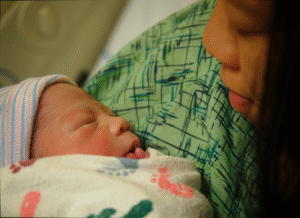İntroduction
Welcoming a new baby comes with a host of questions and discoveries—and before long, you might wonder how those baby monitors really work. Whether you’re considering an audio-only model or one of the latest smart video monitors, understanding the fundamentals can help you choose the best option for your family. Let’s dive into the technology and benefits behind baby monitors in a calm, easy-to-understand way!
We care deeply about you and your little one, and our goal is to be that trusted friend who offers clear, supportive advice as you embark on this incredible journey into parenthood.
What Exactly Is a Baby Monitor?
A baby monitor is a device that lets you keep an eye (or ear) on your little one when you’re not in the same room. It generally consists of two parts: a transmitter (placed in your baby’s room) and a receiver (that you keep close by). Modern systems might also include a camera, two-way audio, and even smartphone integration. In essence, baby monitors offer peace of mind by alerting you if your baby needs attention while you’re busy with other tasks.
The Technology Behind Baby Monitors
Wireless Communication
Baby monitors work mainly through wireless technology. Here’s how:
- Radio Frequency (RF):
Traditional baby monitors use radio waves to transmit sound from the transmitter to the receiver. They operate on specific frequency bands, and many systems are designed to minimize interference, ensuring a clear audio signal between rooms. - Digital and Wi-Fi Systems:
With evolving technology, many baby monitors now use digital signals or even connect to your home Wi-Fi network. Digital models tend to offer higher clarity and encryption, which can help keep your baby’s information secure. Some smart monitors now even let you check in via a dedicated app on your smartphone, giving you real-time audio and video feeds wherever you are.
Remember, we’re here to help you feel confident—not just in our advice, but in every step of your parenting journey.
Audio vs. Video Monitors
- Audio Monitors:
- These simpler models capture sound only. They’re great if you prefer a low-tech approach or if you just want to hear your baby’s coos and cries. They’re usually battery-powered, lightweight, and more affordable.
- Video Monitors:
Video monitors include a camera placed in your baby’s room along with a screen on the parent unit (or an app on your phone). Besides live video, features may include night vision, pan-tilt-zoom, and even lullabies or white noise. This class of monitor gives you a visual confirmation of your baby’s well-being, especially useful during naps or at night.
Advanced Features in Today's Monitors
Modern baby monitors have grown far beyond simple sound and picture transmission. Many now offer:
- Two-Way Communication:
Allowing you to talk to your baby from another room, which can be comforting for both you and the baby. - Temperature Sensors:
Some monitors include environmental sensors that alert you to changes in room temperature, ensuring your baby’s nursery stays comfortable. - Motion Alerts and Sleep Tracking:
Advanced systems can even track your baby’s sleep patterns and alert you if movement or unusual sounds are detected.
Safety and Privacy Considerations
While baby monitors provide an incredible service, it’s important to use them wisely:
- Secure Connection:
For Wi-Fi-enabled monitors, choose a device with robust encryption features. This keeps your private feed safe from unwanted intrusions. - Keep Firmware Updated:
Whether digital or traditional, updating your monitor’s firmware (or app) can help close security gaps. Manufacturers often release updates to improve performance and safeguard against potential vulnerabilities.
Tips for Choosing Your Baby Monitor
- Determine Your Needs:
- Consider whether you need only audio monitoring or if a visual feed is important to you. If you travel or spend long periods away from home, a mobile app integration might be invaluable.
- Check the Range:
Ensure that the monitor covers the distance between your baby’s room and wherever you plan to keep the receiver—especially if your home layout is large or if you’re on a multi-floor residence. - Ease of Use:
Look for a system with intuitive controls and reliable performance so that you’re not stressed during those crucial moments in the dark of the night. - Battery Life:
For wireless systems, make sure the battery life suits your overnight monitoring needs. Some models also offer dual power options (battery and wall outlet). - Reviews and Ratings:
New parents can benefit greatly from the experiences of others, so check reputable review sites and parent forums for recommendations.
In Conclusion
Understanding how baby monitors work—from the basic wireless communication that carries your baby’s coos to the high-tech security measures that protect your family’s privacy—can help you choose the right device for your unique needs. Whether you opt for a simple audio device or a sophisticated video system with many bells and whistles, a baby monitor is an invaluable tool to help you feel connected and reassured as a new parent.
By exploring your options and settling on a model that matches your lifestyle and budget, you’ll be better equipped to relax and enjoy those precious early days of parenthood—knowing that your little one is safe, secure, and soundly resting.
Happy parenting, and here’s to a more peaceful night’s sleep for both you and your baby!












